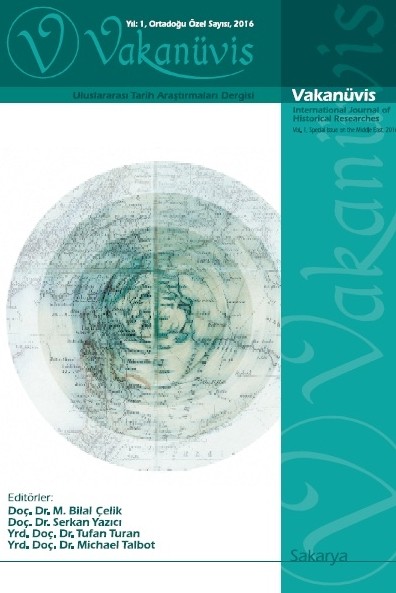Batılı Kaynaklara Göre Karantina Uygulamasının Ortaya Çıkış Süreci
Modern dönemin bir uygulaması olarak bilinen karantinanın ortaya çıkış süresine bakıldığında ortaçağa kadar gidilmesi gerekmektedir. İsim ve köken bakımından İtalya menşeili olan karantinayı ortaya çıkartan gelişme ise Kara Ölüm süreci olmuştur. Tarihte ki en büyük pandemilerden olan ve Avrupa’da milyonları yok eden Kara Ölüm sırasında, İtalyan kent devletlerinde oluşturulmaya çalışılan izolasyon politikaları karantina sürecini başlatan gelişmeler olmuştur. Karantina uygulamasının öncü adımları olarak değerlendirilebilecek bu gelişmelerin ardından 1377 yılına gelindiğinde ilk kez karantina politikası belirlenerek yasal bir mevzuat hazırlanmıştır. Ragusa’nın (bu günkü Dubrovnik) başhekimi Jacob of Padua’nın telkinleri sonucu Büyük Konsey tarafından 27 Temmuz 1377’de ilk kez otuz gün boyunca karantina uygulamasının başlatılmasını belirten yasa çıkartılmıştır. Devlet tarafından uygulanan izolasyonun salgının yayılma hızını kestiğinin anlaşılması ise karantina sürecini kalıcı şekilde başlatan gelişme olmuştur. İzolasyon sürecinin kısa süre sonra otuzdan kırk güne çıkarılması karantinanın isimsel ve kavramsal olarak standart uygulama halini almasını ve modern döneme de bu şekilde taşınmasını sağlamıştır.
The Emergence Process of Quarantine Application According to the Western Sources
The quarantine, known as an application of the modern era, must go back to the medieval times when the emergence period is considered. The development that revealed the quarantine originating in Italy in terms of name and origin was the Black Death process. During the Black Death, one of the biggest pandemics in history and destroying millions in Europe, the isolation policies that were tried to be developed in the Italian city states started the quarantine process. After these developments, which can be considered as the pioneering steps of quarantine application, by 1377, a legal legislation was prepared by determining the quarantine policy for the first time. As a result of the suggestions of Ragusa's (today's Dubrovnik) chief physician Jacob of Padua, the Grand Council passed the law stating the launch of the quarantine application for the first time on July 27, 1377 for thirty days. Understanding that the isolation applied by the state cuts the pace of the epidemic was the development that started the quarantine process permanently. Increasing the isolation process from thirty to forty days after a short time enabled the quarantine to become a standard practice in terms of name and concept and move it to the modern period.
Keywords:
Quarantine, Black Death, Outbreak, Italy,
___
- Bisgaard, Lars ve Sondergaard, Leif (edit.), Living With The Black Death, University Press of Southern Denmark, Odense 2009. Board of Councilmen, Proceedings and Debates of the National Quarantine and Sanitary Convention, No 9, New York 1859. Byrne, Joseph B., Encyclopedia of Pestilence, Pandemics, and Plagues, Greenwood Press, Londra 2006. Carmichael, Ann, “Contagion Theory and Cantagion Practice in Fifteenth-Century Milan”, Renaissance Quarterly, C. 44, No. 2, 1991, s. 213-255. Carpentier, Élisabeth, Une Ville Devant la Peste, Orvieto et la Peste Noire de 1348, S.E.V.P.E.N., Paris 1962. Chiappelli, Alberto, “Gli Ordinamenti Sanitari del Comune di Pistoia contro la Pestilenza del 1348”, Archivio Storico Italiano, Series 4, 20, 1887, s. 3-24. Cliff Cliff ve Smallman-Raynor, Matthew, Oxford Textbook of Infectious Disease Control: A Geographical Analysis from Medieval Quarantine to Global Eradication, Oxford University Press, Oxford2013. Conrad, Lawrence ve diğerleri, The Western Medical Tradition: 800 BC to AD 1800, C.I., Cambridge University Press, Cambridge 1995. Davies, Gill, The Illustrated Timeline of Medicine, The Rosen Publishing, New York 2012. Dols, Michael W., “The Second Plague Pandemic and Its Recurrences in the Middle East 1347-1894”, Journal of the Social History of the Orient, S. 22, 1979, s. 162-189. Emmeluth, Donald, Deadly Diseases and Epidemics, Plague, Chelsea House Publishers, Chelsea 2005. Ewert, Christian,“Water, Public Hygiene and Fire Control in Medieval Towns: Facing Collective Goods Problems while Ensuring the Quality of Life”, Historical Social Research, C. 32, No. 4, 2007, s. 222-251. Gasquet, Francis Aidan, Black Death of 1348 and 1349, G. Bell Press, Londra 1908. Gottfried, Robert Steven, The Black Death: Natural and Human Disaster in Medieval Europe, Macmillan Publishing, Londra 1985. Hecker, Hecker, The Epidemics of The Middle Ages, Çev. B. G. Babington).: University of Pittsburgh Press, Pennsylvania 1850. Herlihy, David, Medieval and Renaissance Pistoia: The Social History of an Italian Town, 1200-1430, Yale University Press, New Haven 1967. Horrox, Rosemary,The Black Death, Manchester University Press, Manchester1994. Jewell, Wilson, Historical sketches of quarantin, TK and PG Collins, Philadelphia 1857. Kilwein, J. H., “Some historical comments on quarantine: part two”, Journal of Clinical Pharmacy and Tkerapeutics, 20, 1995, s. 249-252. Kinzelbach, Annemarie, “Infection, Contagion, and Public Health in Late Medieval and Early Modern German Imperial Towns”, Journal of the History of Medicine and Allied Sciences, C. 61, No. 3, 1, 2006, s. 369–389. Lane, Frederic, Venice: A Maritime Republic, Johns Hopkins University, Baltimor 1973. Langer, William, “The Black Death”, Scientific American, C. 210, No. 2, 1964, s. 114-121. Levililer, 13/2-5. Lyons, Albert S. ve Petrucelli, R. Joseph, Çağlar Boyu Tıp, Çev. Nilgün Güdücü, Roche, İstanbul 1997. Mark, Geoffrey, The Medieval Plague: The Black Death of the Middle Ages, Doubleday Company, New York 1971. Matovinovic, Josip, “A short history of quarantine”, University of Michigan Medical Center Journal, C.35 No. 4 1969, s. 224-228. Mesquita, M. Bueno de, Giangaleazzo Visconti, Duke of Milan (1351-1402): A Study in the Political Career of an Italian Despot, Cambridge University Press, Cambridge 1941. Nohl, Johannes, The Black Death: A Chronicle of the Plague, Westholme Press, Pennsylvania 2006. Panta, Lorenzo Del, Le Epidemie Nella Storia Demografica İtaliana (XIV-XIX), Loescher, Torino 1980. Sehdev, Paul, “The Origin of Quarantine”, ARCANUM, C. 35, 2002, s. 1071-1072. Stuard, Susan Mosher, A state of deference: Ragusa/Dubrovnik in the medieval centuries, University of Pennsylvania Press, Philadelphia 1992. Uçar, İlyas, “Hz. Peygamber Zamanında Medîne’de Ortaya Çıkan Hastalıklar Ve Tedavi Yöntemleri”, Pamukkale Üniversitesi İlahiyat Fakültesi Dergisi, 2017, S:8, s.196-218. Vernadsky, George, Moğullar ve Rusya, Çev. Eşref Bengi Özbilen, Selenge Yayınları, İstanbul 2007. World Health Organization, Proceedıngs And Reports Relating To International Quarantine, Supplement to Official Records No. 63: Eighth World Health Assembly, Cenevre 1958. Ziegler, Philip, The Black Death, Sutton Pub. Ltd., Gloucestershire 1993. http://www.sciencemuseum.org.uk/broughttolife/themes/publichealth/blackdeath.
- ISSN: 2149-9535
- Başlangıç: 2016
- Yayıncı: Serkan YAZICI
